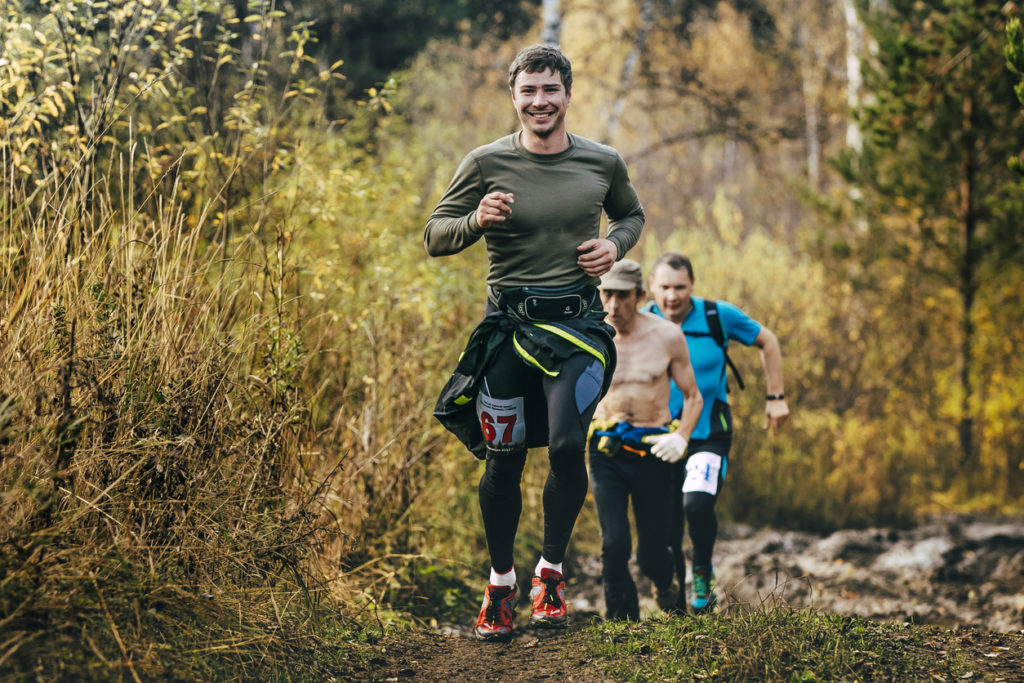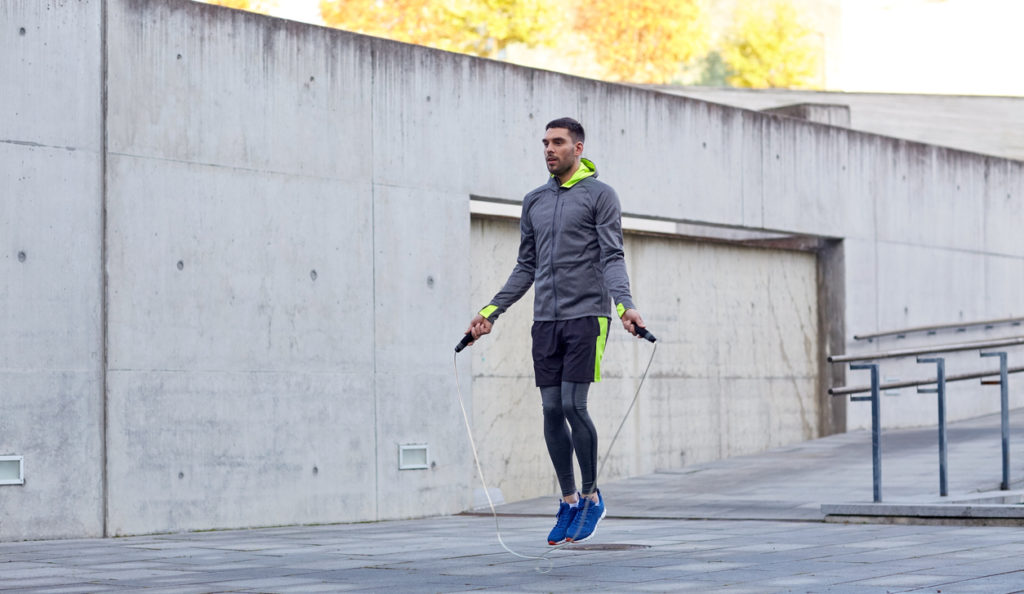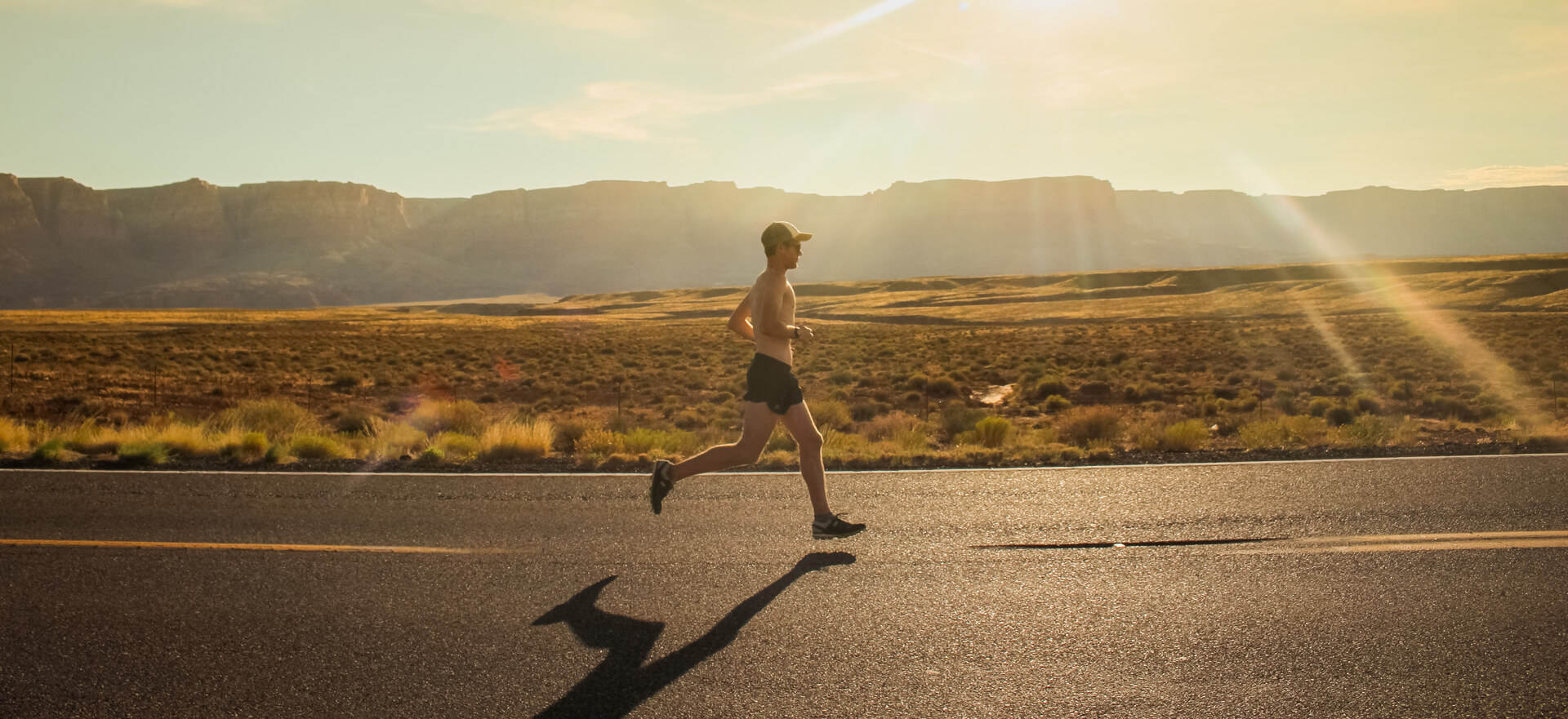
In the world of trail running, often it’s not the most talented runner taking the top prize, but the one who’s best prepared. Alongside good balance and a strong core, successful trail runners need to have studied the course and packed the appropriate kit. To help make sure you’re fully prepared for your next trail race, here are eight things to get you to the start line in the best possible shape…
1. Self-assessment
This is about recognising what kind of body you have. Are you a warm weather specialist or a winter warrior? A morning man or a night owl? Does your body leap into action or warm up gently? Working with your body, rather than against it, will make training more enjoyable and effective. To give you a wintry example: if you experience breathing difficulties in cold weather, make sure your chest and upper thorax are warm and relaxed before you head out in to the cold.
2. Run like a sprinter

Incorporate some speed drills and sprints into your training – preferably barefooted around a cricket pitch or park. This need only be for 10-20 minutes or four flat-out sprints of 30 seconds. But the onus is on form, high knee lift, fast feet, driving off from your big toe, with an upright posture. Make sure your muscles are warmed up first. The barefoot option is mainly used to reduce stride length, encourage good form and improve sensory feedback. It doesn’t mean you should always run barefooted. It will enhance your pleasure of the running experience if you cultivate an understanding of pace, by going through the gears (where first is walking, second a slow trot, third is a tempo and fourth is a sprint).
3. Improve your balance

Balance is key for downhill running, since it is basically a controlled fall. Single-leg squats will help to improve your balance. One of the many things that makes Africans such natural runners is their ankle mobility. If you run a lot on the track or road, you can lose some ankle mobility. Counter this by sitting on your feet, then kneeling in the sprint start position (also called the ‘Afghan squat’). You can build ankle strength just by walking around barefooted on your toes. Combine strength work with stretching/mobility work, though, as strengthening can also mean shortening of the muscle. Skipping with a rope and jumping on the spot are great for improving foot placement, balance and rhythm.
4. Work on your core
In a way, this is the most important thing you can do because without a fully activated core, you are carrying around a sack of potatoes. Try to fit in at least one activity a week that involves a test of your core strength. This could be climbing, pilates or yoga, or some simple breathing exercises. For core strength, you will need to strengthen your diaphragm. One way of doing this is by pressing in to your diaphragm as you breathe in and breathe out slowly against resistance. Resist that runners’ tendency of doing as many as you can, though; only do as many as is relatively comfortable.
5. Scope out the course
As there is sometimes a bit of an overlap between trail running and fell running (note: don’t mention this to seasoned fell runners), it is worth knowing under whose auspices the run is held, as this will determine the rules. A fell race, which is being supported by the FRA, means you can choose your route, as long as you make the relevant checkpoints. Most trail races, held under the auspices of the TRA, have a pre-laid route that doesn’t allow for freestyling!
6. Check the weather
If you are running along a ridge against a prevailing wind, it is useful to know the duration of such sections. The wind often changes direction at weather fronts, the curved black line on an isometric chart, which can be a warm or cold front. Leaning in to a wind will tire you far more than you realised and sap your hip flexors, which are working harder now to do their job. Take into account that last-minute changes in the weather can render a course almost unrecognisable. A glistening brook may have swelled and flooded; a river spilled its banks; a steep section of tarmac made perilous by a stealthy sheath of ice.
7. Respect Sod’s law
The Law of the Sod rules on race day. The traffic won’t respect your plans, the weather won’t abate and, as you’ve decided to stay somewhere else overnight, you won’t be able find the pre-race food that you’d usually eat.If you have to travel a long way, give yourself time to stretch en route, and make sure you stay hydrated. It sounds obvious, but major muscles like the glutes can go in to sleep mode if not activated for too long and secondary movers will step up to take their place, causing tightness and spasms. You can mediate this by propping yourself up, or support your lower back, so that your hips are higher than your knees.
8. Nail your tactics
Choose a motivating narrative. This is your reservoir of motivation to dip into when you’ve almost reached your limit. This could be proving your doubters (including yourself) wrong. Everyone has a different tipping point between positive motivation and stress and anxiety. You can raise the threshold by cultivating a positive outlook on stress. For instance, it makes you feel alive! Relax on the hills, take advantage of any flat surfaces and concentrate on what’s under your feet and immediately up ahead. Forget about the end of your halfway splits. This will only psyche you out, especially if you are a perfectionist.







